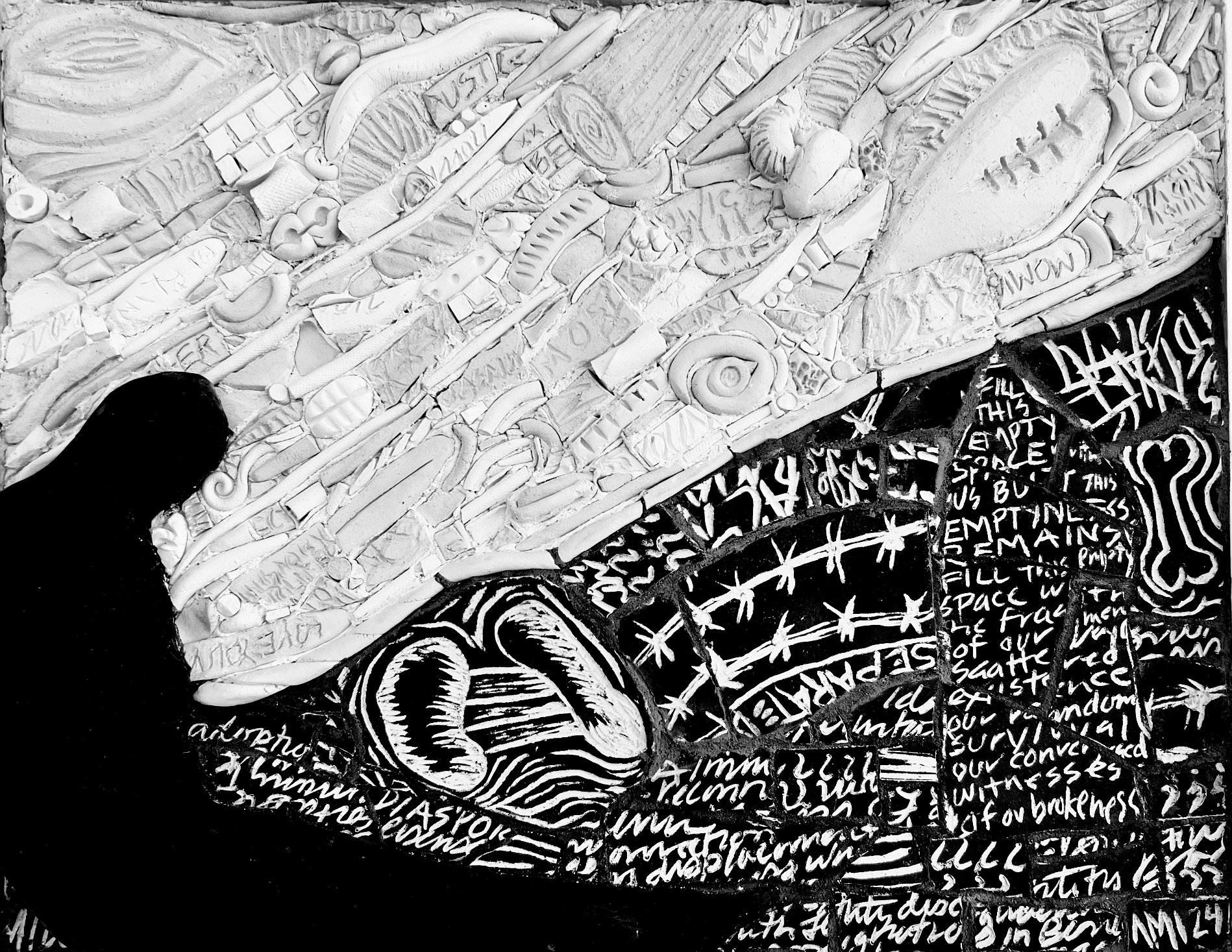Fragments and the spaces inbetween.
Ceramics, as an entwined mosaic discipline, is a connection to Earth and nature; our bodies' survival depends on the vital minerals found on our planet. Clay is the result of weathering rocks, eroding hills, and mountains worn away by water and time. Clay lays dormant in the Earth, charged with potential because it responds and transforms by the elements—air, fire, and water. Hands in clay engage our bodies with the land, allowing touch to interact viscerally with a sense of place.
Mosaic, as a contemporary art medium, plays a large part in my intersectional art practice, which is a literal ‘mosaic’ of art methodologies and identities, in which memory and trauma, maternalism, and birth politics are reflected in works of sculptural, graphic, and visual personal narratives. This process is part of a complex interdisciplinary visual language aligned with a methodology of brokenness and reinvention. Mosaic, ceramics, writing, drawing, collage, and sculpture are parts of a specific autoethnographic art practice that embodies connection, fixing, repair, and reinvention in both process and outcome. My practice-based research is a means to distinguish this approach to contemporary mosaic as a responsive interdisciplinary art form; it is a strategy for empowerment, destruction, and reinvention. I demonstrate that a material (visceral)approach to art making is a response to reflect upon and address ancestral identity, disrupted lineage, and survival.
The response of making is an act of bearing witness to suffering and cruelty using auto-theoretical narratives. Art-making is an investigative mechanism for delving into the profound impact of ancestral displacement on the post-holocaust generation. Mosaic art, as an interdisciplinary visual and narrative strategy, unites and empowers fragmented identities through the lens of feminist perspectives.
Melancholia, 2024
